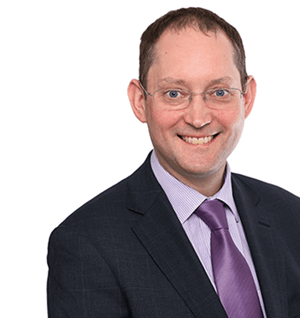Overview
- The Budget has provided much-needed clarity for a commercial property market that has been characterised by a ‘wait-and-see’ mentality in recent months. Prior to the Budget announcement, investor sentiment remained cautious, with several transactions delayed as buyers and sellers waited for details on potential tax reform. While the Chancellor has drawn on a broad range of revenue-raising measures, several of the scenarios widely discussed in the market did not materialise. This will come as a relief for many parts of the commercial property sector.
- Global economic conditions remain steady, with the IMF’s October 2025 Outlook projecting growth of 3.2% in 2025 and 3.1% in 2026, supported by improved financial conditions and stabilising global trade dynamics.
- In the UK, the latest ONS figures show that GDP grew by only 0.1% in Q3, following 0.3% in Q2. Annual growth stands at 1.3%, supported by increases in services and construction, while production output declined. GDP per head showed no growth over the quarter but is 0.8% higher than a year earlier.
- The outlook remains one of modest growth. The Office for Budget Responsibility has downgraded its forecasts for GDP growth in each of the next four years. It now expects 1.4% in 2026 and 1.5% per annum from 2027 to 2030. The Treasury consensus expects slightly lower growth in 2026 than the OBR, at 1.2%.
- Labour market conditions are softening, with unemployment edging higher and wage growth slowing. Inflation continues to ease, and CPI fell to 3.6% in October, down from 3.8% in September. Treasury consensus forecast expects CPI to average 3.5% in Q4 2025, before gradually moving closer to the 2% target during 2026.
- The Bank of England held Bank Rate at 4.0% at its November meeting in a closely split vote, with several MPC members favouring a reduction. This indicates that support for further easing is building, although the Committee continues to emphasise a cautious, data-driven approach.
- Monthly indicators point to an uneven performance across the economy. Manufacturing remains weak, although conditions are starting to stabilise, while services activity continues to grow at a modest pace. Construction remains under pressure, with firms reporting a sustained decline in workloads. Many businesses continue to face elevated input costs and cautious demand, reinforcing the sense of a challenging operating environment.
Recent output trends and indicators
- September’s monthly GDP is estimated to have fallen -0.1% over August, following August’s (downwardly revised) zero growth. Production output fell by -2.0%, largely driven by a fall in the manufacture of motor vehicles amid cyber incidents which paused production at Jaguar Land Rover. Both the services and construction sector output figures showed growth of 0.2%.
- October’s manufacturing PMI (S&P Global) rose to 49.7 from 46.2 in September and marks the highest level since October 2024, but was still in contraction (below 50). Production rose for the first time in 12 months amid restocking and importantly, the restarting of operations at Jaguar Land Rover. Output levels grew while investment goods production fell at a slower pace. New orders and exports however fell again owing to weak demand from abroad, and employment fell for the 12th straight month.
- The UK Services PMI also rose in October, moving to 52.3 from 50.8 in September. Firms noted an increase in domestic demand despite continued business uncertainty. There was notable postponement of spending plans ahead of the Budget and new work from international orders fell for the second month. Employment levels also fell although this was at the slowest rate in a year.
- Finally, the construction sector PMI declined in October, down to 44.1, the tenth month in a row of contraction. This is also the lowest rate since the COVID pandemic. Respondents reported poor market conditions and fewer tender opportunities, and employment in the sector fell at its fastest pace in over five years. Civil engineering work plummeted but declines were also reported in commercial and residential construction activity.
Labour market
- The UK unemployment rate increased to 5.0% in the three months to September, the highest level since May 2021. The employment rate edged down 0.1% to 75.0% as total employment fell by 22,000 during the quarter. This is the first decline since Q1 2024.
- Estimates for the number of payrolled employees for October indicate a fall of around 32,000 over September and 180,000 over the year. Again, these should be treated as provisional and are likely to be revised when more data are available next month. The biggest fall in employees was from the wholesale and retail sector.
- The estimated number of job vacancies in the UK shows a largely unchanged figure over the quarter, with early estimates indicating a small increase of around 2,000. If this figure is not revised this would mark the first quarter in over three years where vacancies have not declined.
- UK employees’ average earnings (excluding bonuses) rose 4.6% year on year, easing slightly from 4.7% the month before and marking the weakest regular pay growth since April 2022. Private sector wages slowed to 4.2%, their lowest since late 2021 while public sector wages increased to 6.6%, the steepest rise in that sector since 2023.
Inflation
- Annual CPI inflation eased to 3.6% in October, the lowest level in four months, down from 3.8% in each of the last three months. Prices slowed for housing and household services, largely due to the downward effect of gas and electricity prices from a change in the energy price cap in October. Smaller price rises were also found in restaurant and hotels as well as services, clothing and footwear. Upward pressure on the rate this month came from food and non-alcoholic beverages as well as recreation and culture.
- Core CPI (CPI excluding energy, food, alcohol and tobacco) was 3.4% in the 12 months to October 2025, down from 3.5% in the 12 months to September; the CPI goods annual rate fell from 2.9% to 2.6%, while the CPI services annual rate fell from 4.7% to 4.5%.
- The Bank of England had anticipated a peak in CPI inflation of around 4.0% in September; however, inflation ultimately came in slightly lower at 3.8%, before easing further to 3.6% in October. CPI is still expected to moderate gradually towards the 2% target over the medium term. The latest HM Treasury consensus forecast has 2.3% by Q4 2026, and the Office for Budget Responsibility has an average of 2.5% for 2026.
Interest rates
- The Bank of England’s Monetary Policy Committee (MPC) voted 5-4 to keep Bank Rate at 4.0% at its November meeting. The four members who voted against preferred a 25bps cut, suggesting there is growing support for easing the rate going forward. The next meeting of the MPC is scheduled on 18 December.




